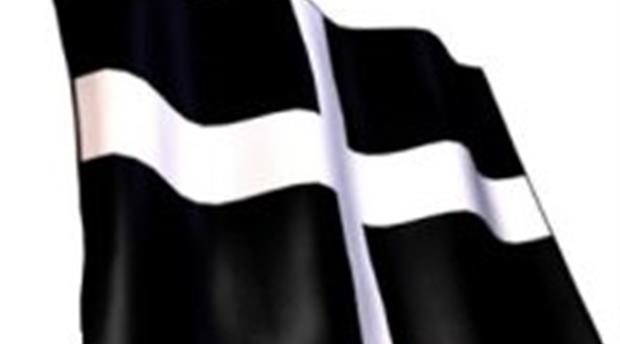This site uses cookies. By continuing to browse the site you are agreeing to our use of cookies. Read our privacy policy.
Cornish Facts

-
Cornwall has over 300 beaches.
-
Some of Cornwall’s beaches have waves that can reach over 25ft – that’s higher than a house!.
-
Cornwall has the longest coastline in Great Briton – it measures 697km.
-
Cornwall is almost an island as it is surrounded by sea on three sides.
-
7,000,000,000,000,000 grains of sand lie on Perranporth Beach on the north coast in Cornwall.
-
Cornwall has its own language – it is not widely spoken but is taught in schools! Dydh da. That means ‘hello’ in Cornish!.
-
Cornwall has its own flag which is called the St Piran. It is black with a white cross and represents white lines of tin between dark molten rocks (see above).
-
Richard Trevithick built the first ever steam engine – it first ran in Camborne on Christmas Eve 1801.
-
The traditional Cornish pasty was a "packed lunch" for the miner, often containing meat and vegetables at one end and a sweet filling at the other. The platted or "crimped" crust was a very important part of the pasty - but was never intended to be eaten. Arsenic is often a by-product of mining and would naturally be present on the miner’s fingers when they ate their pasties. Consequently, the crust was used to hold the pasty until the contents has been eaten, and then thrown away.
-
Fisherman in Cornwall can catch over forty different types of fish, more varieties than everywhere in Britain.
-
During the summer, the A30 carries around 30,000 cars a day.
-
China clay was discovered in Cornwall by William Cooksworthy in 1974. It is now Cornwall’s largest export (other than the pasty!).
-
The Cornish flag is an exact reverse of the former Breton national flag (black cross on a white field) and is known by the same name "Gwynn ha Du" - white and black.
-
Cornwall comes from the word ‘Cornovii’ meaning hill dwellers, and ‘Waelas’ meaning strangers - hill dwelling strangers!
-
30% of Cornish landscape is recognized as “Areas of Outstanding Natural Beauty”. Take a look for yourself:
-
Cornwall has the longest coastline in Great Britain; 697km of the total 18,185km British coast.
-
There are over 200 surf-related businesses in Cornwall. The UK surf industry is worth £200 million, £21 million of that is generated in Cornwall.
-
Cornwall boasts the largest collection of plant species in the British Isles.
-
Between 1998 and 2008, Cornwall’s population increased by 9.5%, twice the UK county average.
-
The first ever wind turbine was constructed in Redruth in 1892 and Britain’s first ever wind farm opened in Delabole in 1991.
-
Cornwall’s most mysterious creature is the ‘Beast of Bodmin’ which is found on Bodmin Moor.
-
The most ancient walk in Cornwall is the ‘Saints Way’ or ‘Forth an Syns’ in Cornish.
-
Cornwall’s black and white flag is the banner of St Piran. The white line between the black represents white lines of tin between dark molten rocks.
-
Cornwall has its own series of tartan. The different colors represent different parts of Cornish history.
-
Cornwall’s national anthem is ‘Trelawny’. It’s often performed by Cornwall’s male voice choirs.
-
Eden’s largest biome is fifty meters high, big enough to house the Tower of London. The scaffolding structure used to build it went into the Guinness Book of Records as the largest ever freestanding scaffold structure in the world. The 46,000 poles would have stretched end to end for 230 miles (almost to London).
-
Artists have been coming to Cornwall for over two hundred years. They love the landscape and quality of light which is much brighter than other parts of Great Britain. The most painted scene in Cornwall is the view of St Michael’s Mount.
-
Cornwall attracts 4.5 million tourists a year who spend 25 million nights in the county. They’re worth a cool £1bn to the Cornish economy
-
Of those who live in Cornwall, 20% live in settlements of fewer than 1000 people and these settlements are very safe! In 2006, Cornwall’s 750 police officers made, on average, just over an arrest each.
-
Anyone living in Cornwall may experience a recordable crime just once every fifteen years. It could take up to fifty three years to be stopped by a police officer.
-
Pasty’s are worth £150 million a year to the Cornish economy and holidaymakers eat an average of 13,500 of them a day. If you wanted to burn that many off you’d have to walk the entire Cornish coastline 225 times!
-
On July 20th 1907, Bodmin Jail was the last place in Britain to hold a public hanging.
-
Cornish tin mining in the 1900s produced 50% of the world’s tin and was the single largest enterprise in Europe
-
The tin miners of Cornwall once traded with the Phoenicians and at this time Cornwall was known as The Cassiterides or The Tin Islands.
-
Cornwall has 19,000 VAT registered business - that’s more businesses per head than anywhere else in Great Britain.
-
Modern archaeology now admits that the Cornish and Welsh of today are the remnants of an ancient race native to these islands since at least the Neolithic period, between 4,000 and 6,000 years ago.
-
Cornwall was originally part of the kingdom of Dumnonia that may well predate the Roman occupation.
-
Cornwall is an older nation than England and one of the oldest Duchies in Europe.
-
In 936 the English King Athelstan fixed the boundary between England and Cornwall as the east bank of the river Tamar.
-
No record exists of any formal annexation of Cornwall to England.
-
Cornwall’s continued independence is strongly supported by the fact that it has enjoyed a special status, as Earldom and Duchy.
-
Cornwall and the Cornish have had an identity distinct form the English for centuries as is evidenced by the existence of the Cornish language as a mother tongue up until the late 18th or early 19th century and the subsequent successful revival of said language in the 20th century. The language exits in our First, Familial and Place names.
-
Contrarily to popular belief the Cornish language didn't completely die out. During the 1840s, there were a group of children in Zennor Parish, brought up bilingually, who habitually spoke Cornish among themselves. One of these, John Mann (then of Chapel Street, St Just) was still alive, at the age of 80, in 1914; ten years after Jenner's Handbook had kick started the Cornish language revival.
-
Constitutionally the nature of Cornwall and its description of being a county of England are disputed - if correct these arguments would indicate a de jure status for Cornwall as a Duchy and a crown dependency not a county of England.
-
Cornwall was portrayed on numerous maps, including the famous Mappa Mundi, as separate from England right up until the mid-16th century and Henry VIII even listed England and Cornwall separately in the list of his realms given in his coronation address.
-
The Cornish language gained official UK Government recognition in 2002 and funding in 2005.
-
Cornwall is legally an extra territorial land from England and not an administrative county which it has illegally been for near on 400 years
-
90% of Cornish place names are of Celtic origin and derived from the Kernewek language.
-
In the late 1930s, when the outside world was becoming increasingly vociferous over the Nazi's treatment of the German Jews, German newspapers, fed by the Nazi propagandists, tried to counter criticism from British sources by claiming that the English should be the last to complain, since they had 'persecuted' the Cornish from time immemorial.
-
The Cornish and Welsh languages predate English and are the only European languages along with Basque language to have been in use before, during and after the Roman Empire.
-
Because of its cultural and linguistic similarities with Wales, Cornwall was originally charted by the Anglo-Norman's as 'South Wales'.
-
Cornwall has two unique Celtic sports, Cornish Hurling and Cornish Wrestling.
-
Many Cornish festivals and events, like the ‘Obby Oss’ have their origins in the Celtic Britons and predate the arrival of the English in the British Isles.
-
Cornwall is larger than more than 20 UN nations, and one of the oldest Duchies in Europe.
-
The 1847 Cornish potato famine, which deprived the working classes of one of their staple foods, occurred at the same time as the Irish potato famine. Combined with an increase in wheat and flour prices, which put the price of bread out of the reach of Cornish miners and their families, it is recorded in Cornish history as the "Corn Riots".

